Bidirectional Relationships among Children's Perceived Competence, Motor Skill Competence, Physical Activity, and Cardiorespiratory Fitness across One School Year
- PMID: 34485510
- PMCID: PMC8416382
- DOI: 10.1155/2021/1704947
Bidirectional Relationships among Children's Perceived Competence, Motor Skill Competence, Physical Activity, and Cardiorespiratory Fitness across One School Year
Abstract
Purpose: The bidirectional associations among children's motor skill competence (MSC), perceived competence (PC), physical activity (PA), and cardiorespiratory fitness (CRF) over time remain unanswered. This study is aimed at discerning the bidirectional relationships among elementary school children's MSC, PC, PA and, CRF over the course of one school year.
Methods: A total of 261 second and third grade children (127 boys, 134 girls; meanage = 8.27 years; BMI = 18.22 ± 3.71) were recruited from two Texas elementary schools. Approximately 73.56% of participants were White American. Children's baseline data were assessed in September/October in 2012 (Time1), and identical assessments were conducted in April/May in 2013 (Time2). MSC was assessed using product-oriented skill tests (e.g., throw, kick, and jump). PC was assessed via the Pictorial Scale of Perceived Competence for Children. Minutes spent in moderate-to-vigorous PA (MVPA) was assessed using ActiGraph GT3X+ accelerometers for five days, and CRF was assessed by the PACER test. Six age- and body mass index-adjusted cross-lagged panel models were used to test the relationships between the variables.
Results: We observed that T1 MSC significantly predicted T2 MSC (β = 0.59; p < 0.01), T2 CRF (β = 0.28; p < 0.01), and T2 MVPA (β = 0.18; p < 0.01). Children's CRF was a positive predictor for T2 CRF (β = 0.56; p < 0.01) and T2 MSC (β = 0.13; p < 0.05) Additionally, T1 MVPA significantly predicted T2 MVPA (β = 0.30; p < 0.01) and T2 PC (β = -0.14; p < 0.05).
Conclusion: Findings suggested a fully bidirectional relationship between elementary children's MSC and CRF. Other bidirectional relationships among the variables were only partially supported. Educators and health professionals need to emphasize the importance of developing both MSC and CRF to maintain physical health over time.
Copyright © 2021 Suryeon Ryu et al.
Conflict of interest statement
The authors declare that there is no conflict of interest regarding the publication of this paper.
Figures

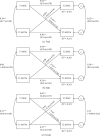
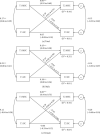
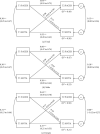
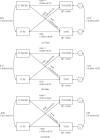
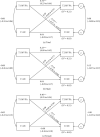
Similar articles
-
Investigating Relationships between Preschool Children's Perceived Competence, Motor Skills, and Physical Activity: A Cross-Lagged Panel Model.J Clin Med. 2021 Nov 29;10(23):5620. doi: 10.3390/jcm10235620. J Clin Med. 2021. PMID: 34884322 Free PMC article.
-
Changes in and the mediating role of physical activity in relation to active school transport, fitness and adiposity among Spanish youth: the UP&DOWN longitudinal study.Int J Behav Nutr Phys Act. 2020 Mar 10;17(1):37. doi: 10.1186/s12966-020-00940-9. Int J Behav Nutr Phys Act. 2020. PMID: 32156288 Free PMC article.
-
Development of Children's Actual and Perceived Motor Competence, Cardiorespiratory Fitness, Physical Activity, and BMI.Med Sci Sports Exerc. 2021 Dec 1;53(12):2653-2660. doi: 10.1249/MSS.0000000000002749. Med Sci Sports Exerc. 2021. PMID: 34310501
-
Systematic review and meta-analysis of physical activity interventions to increase elementary children's motor competence: a comprehensive school physical activity program perspective.BMC Public Health. 2024 Mar 15;24(1):826. doi: 10.1186/s12889-024-18145-1. BMC Public Health. 2024. PMID: 38491432 Free PMC article.
-
The Bidirectional Correlation between Fundamental Motor Skill and Moderate-to-Vigorous Physical Activities: A Systematic Review and Meta-Analysis.Children (Basel). 2023 Sep 4;10(9):1504. doi: 10.3390/children10091504. Children (Basel). 2023. PMID: 37761465 Free PMC article. Review.
Cited by
-
Investigating Relationships between Preschool Children's Perceived Competence, Motor Skills, and Physical Activity: A Cross-Lagged Panel Model.J Clin Med. 2021 Nov 29;10(23):5620. doi: 10.3390/jcm10235620. J Clin Med. 2021. PMID: 34884322 Free PMC article.
-
The Moderating Effects of Physical Activity on the Relationships between Child Maltreatment and Health Outcomes among Korean Adolescents: A Secondary Analysis of the 2020 Korean Children and Youth Rights Survey.J Clin Med. 2023 Jul 9;12(14):4574. doi: 10.3390/jcm12144574. J Clin Med. 2023. PMID: 37510688 Free PMC article.
-
Relationship Between Physical Literacy and Cardiorespiratory Fitness in Children and Adolescents: A Systematic Review and Meta-analysis.Sports Med. 2025 Feb;55(2):473-485. doi: 10.1007/s40279-024-02129-7. Epub 2024 Nov 23. Sports Med. 2025. PMID: 39579330 Free PMC article.
-
Integrating Regular Exergaming Sessions in the ExerCube into a School Setting Increases Physical Fitness in Elementary School Children: A Randomized Controlled Trial.J Clin Med. 2022 Mar 12;11(6):1570. doi: 10.3390/jcm11061570. J Clin Med. 2022. PMID: 35329896 Free PMC article.
References
MeSH terms
Grants and funding
LinkOut - more resources
Full Text Sources
Medical
Miscellaneous

